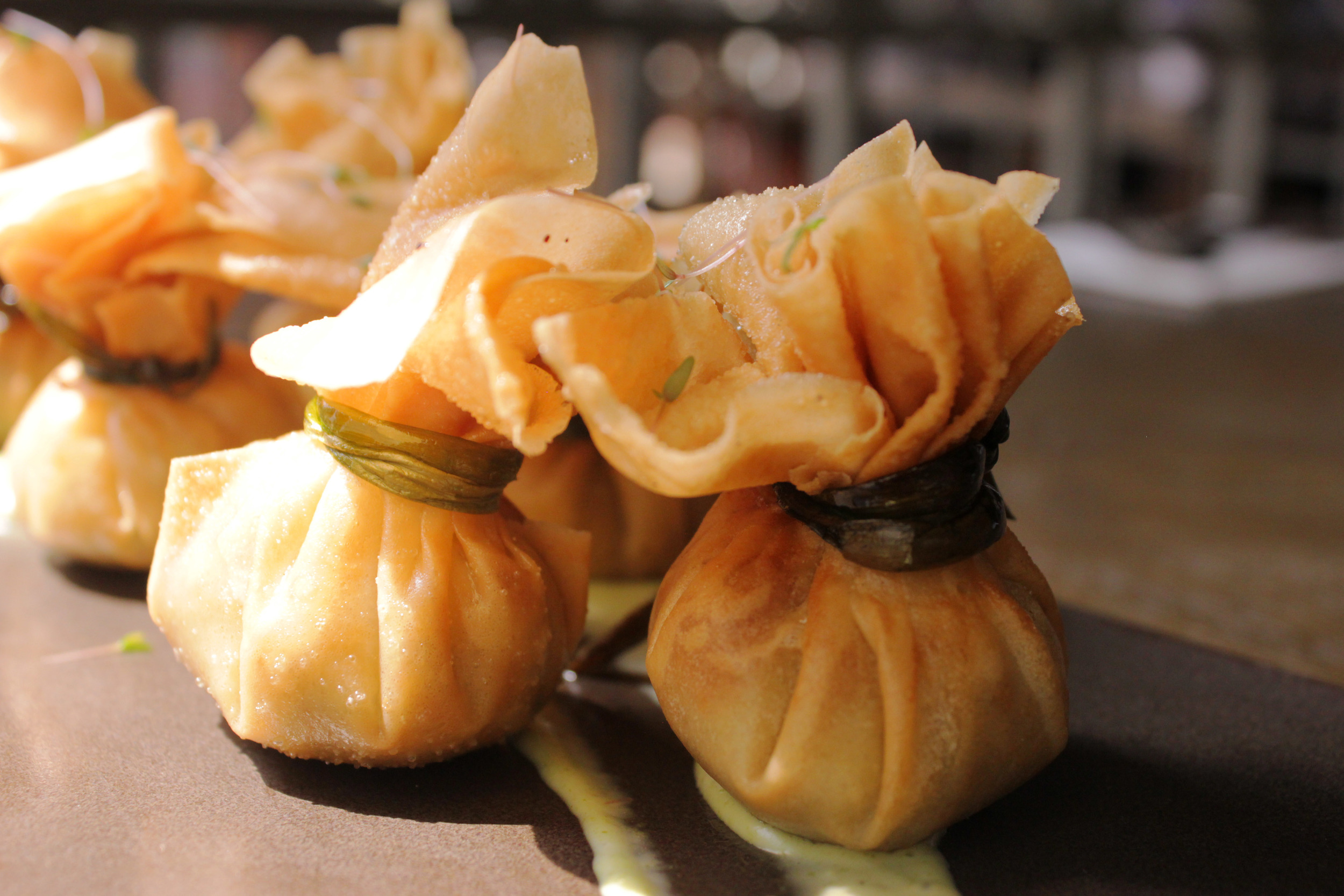There isn't a palette more diverse than an Indian one. And you'd be hard pressed to find that kind of variety from just a single section of the country anywhere else.
One of the earnest ideas behind The Permit Room is to introduce people to the sheer variety of traditional South Indian cuisine, but with a modern-day take on it. Essentially it's recipes from your ajji's (Kannada for grandma) kitchen, but served in a rather modern, and also cocktail-friendly form. Your ajji may or may not approve.
Thindi Tales* is an attempt to take you one step deeper, the equivalent of getting you to eat meals with your fingers, and hopefully help you appreciate south-indian cuisine in all its gastronomic glory.
This time, we take the term ‘having your brains fried’ to a whole new level—with the Brain Dry Fry, of course.
Soft insides, with a crispy, crunchy cover, fried to golden brown perfection.
The Dish
This dish definitely isn't for the faint hearted.
Why you ask? Well, basically because it’s goat brains in a fried cover. But that would be a criminal oversimplification of a classic dish.
The classic version of the dish is either dearly loved, or highly detested. There is no middle-ground with this one.
But more on that later. First, a little trivia.
A Little History
The hardcore non-vegetarian will know that the dish itself has been around for a long time now, more commonly known as ‘Bheja Fry’, which literally means ‘fried brains’.
We’d like to think that the chef who first created this had a sense of humour and was punning on the local term for someone ‘who eats your brain’. Or to translate it in a less twisted way, someone who is exceptionally annoying.
But we don’t know for sure. And we probably never will. But one can hope. Because that’s what this dish does—it gives you hope.
Pretty little potlums prepared to perfection.
At The Permit Room
While most people enjoy this in a basic form with a slightly gravy-esque masala, our version of the classic is a bit different both in flavouring and presentation.
Our Brain Dry Fry is a delightful blend of slow cooked lamb brain, combined with a special selection of dry masalas, lovingly stuffed into little ‘potlums’ and then fried till it takes on a very specific, and very gorgeous golden-brown hue.
And then, and only then, is it served to you.
Seriously! The potlums are so pretty, that Potli Baba would be proud.
(And if you don’t know who Potli Baba is, then we now know that you probably didn’t take Hindi as a second-language. See how smart this dish makes us?)
And it also makes for a perfectly flavoured, non-intrusive accompaniment with your drink.
Our Chef Says
"You'll see that our version of the Beja Fry isn’t served as the basic meat and masala presentation that it has come to be known for.
We decided to serve it in little fried pouches, adding a crunchy element to the dish, which doesn’t otherwise exist in the classic version. The crunchiness of the exterior potlum shell perfectly offsets the soft texture of the meat inside.”
Pick up a potlum, and see if you don’t enjoy this new take on a dish that evokes much passion.
Fun Fact: The term 'Bheja Fry' has been used from everything to dishes with actual fried brains, to annoying people 'eating your brains', and even as a Bollywood movie name. Which probably involves a lot of people annoying each other. We don't know. You watch it and tell us, ok?!
* Shout out to Sneha Suhas for the very cool title suggestion. Thindi is Kannada for dish/food/refreshment, and perfect for our little stories. Thanks, macchi!






